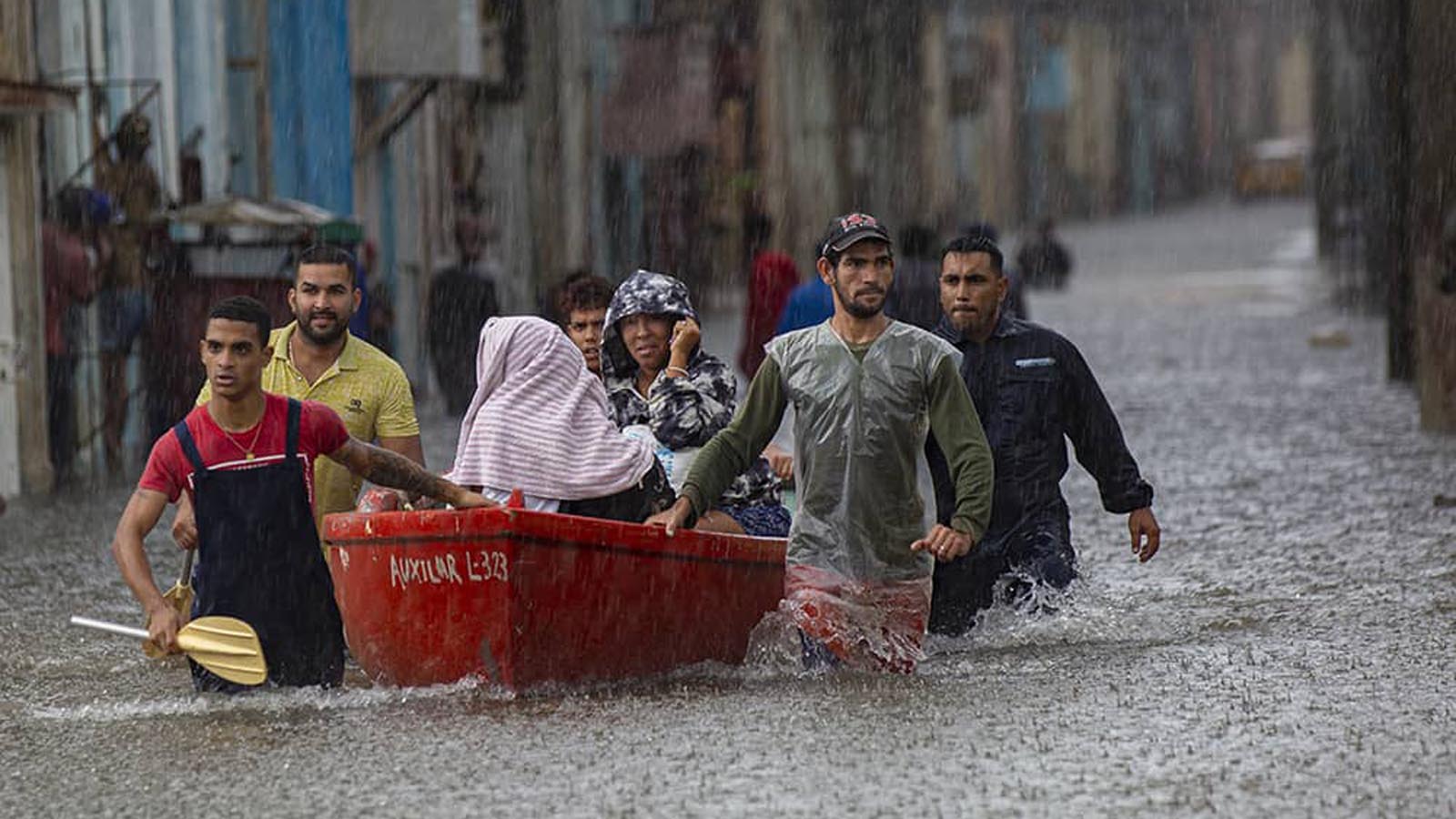Potential Tropical Cyclone One (PTC 1) brought torrential rains and flooding to western Cuba and much of the South Florida coast overnight, dumping more than 10 inches of rain. In Cuba, where Paso Real de San Diego recorded 11.85 inches (301 mm) of rain, floods killed at least three people and displaced more than 4,000, according to floodlist.com. In South Florida, numerous high water rescues were performed in the Miami metropolitan area, where numerous locations received over 10 inches of rain, as documented by WPLG meteorologist Michael Lowry.
At 11 a.m. EDT Saturday, PTC 1 was centered near the southwest coast of Florida, about 35 miles northeast of Naples. The system was headed northeast at 18 mph with top winds of 40 mph and a central pressure of 1002 mb. Despite the tropical-storm-strength winds, dry air and high wind shear had combined to keep PTC 1 from organizing well enough to be classified as a tropical cyclone, according to NHC, but the disturbance still packed the punch of a tropical storm. At 9 a.m. EDT Saturday, Fowey Rocks in the Florida Keys reported sustained winds of 46 mph, gusting to 56 mph, at an altitude of 144 feet.At 9 a.m. EDT Saturday, Fowey Rocks in the Florida Keys reported sustained winds of 46 mph, gusting to 56 mph, at an altitude of 144 feet. Tropical storm warnings remained in effect for portions of southeastern Florida and the northwestern Bahamas, and a tropical storm watch was in effect for Bermuda.
Forecast for PTC 1
The disturbance had marginal conditions for development Saturday afternoon, with high wind shear of 20-30 knots, ocean waters of 27 degrees Celsius (81°F), and an atmosphere with a mid-level relative humidity of 60%. Satellite images on Saturday afternoon showed that PTC 1 had a modest area of heavy thunderstorms entirely to the east of a poorly-defined low-level surface circulation over southwestern Florida. Strong upper-level winds out of the west-southwest were keeping any heavy thunderstorms from forming on the west side of the center.
Wind shear is predicted to remain high for the next four days, and PTC 1 is unlikely to intensify significantly. However, upper-level low pressure system will influence PTC 1 over the next few days, potentially providing enough energy and spin to allow it to form into Tropical Storm Alex on Saturday night or Sunday morning as it speeds east-northeastward out to sea. On Monday morning, PTC 1 is expected to pass a few hundred miles north of Bermuda. In its 11 a.m. EDT wind probability forecast, NHC gave Bermuda a 35% chance of experiencing tropical storm-force winds.
In its 8 a.m. EDT Saturday Tropical Weather Outlook, NHC gave PTC 1 two-day and five-day odds of developing into a tropical storm of 90%. PTC 1 is expected to reach a peak intensity of 50 mph on Monday, then become extratropical on Tuesday.
Heavy rains from PTC 1 will continue to be its main threat, with a few tornadoes possible over southeastern Florida and the Keys through Saturday afternoon. Minor coastal flooding from a storm surge of 1-3 feet will also affect the northwestern Bahamas.
Bob Henson contributed to this post.
Website visitors can comment on “Eye on the Storm” posts (see below). Please read our Comments Policy prior to posting. (See all EOTS posts here. Sign up to receive notices of new postings here.)


